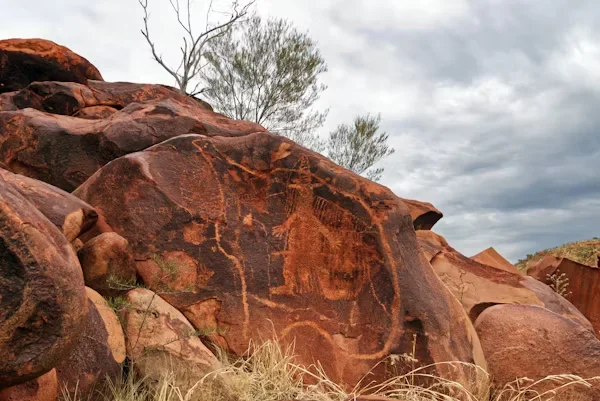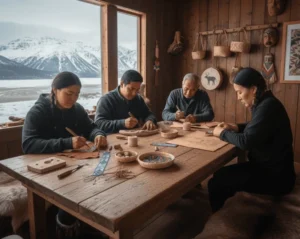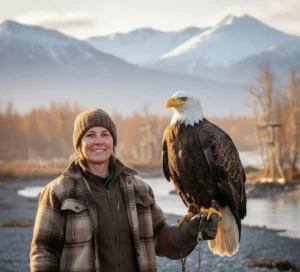Disclaimer: This content is shared for educational purposes only. Indigenous visual culture is a vital part of Indigenous culture, spirituality, and storytelling. Certain symbols, stories, and practices are sacred and belong to specific communities. We encourage readers to seek information directly from Indigenous visual culture and cultural organizations for deeper understanding and respect.
Aboriginal art is one of the world’s oldest continuous art traditions. More than just aesthetic expression, it’s a profound cultural language that tells stories, preserves history, and connects people to the land. If you’ve ever admired dot paintings, rock carvings, or bark artworks and wondered about their deeper meaning, this beginner’s guide will help you understand the essentials of it.
What Is Aboriginal Art?
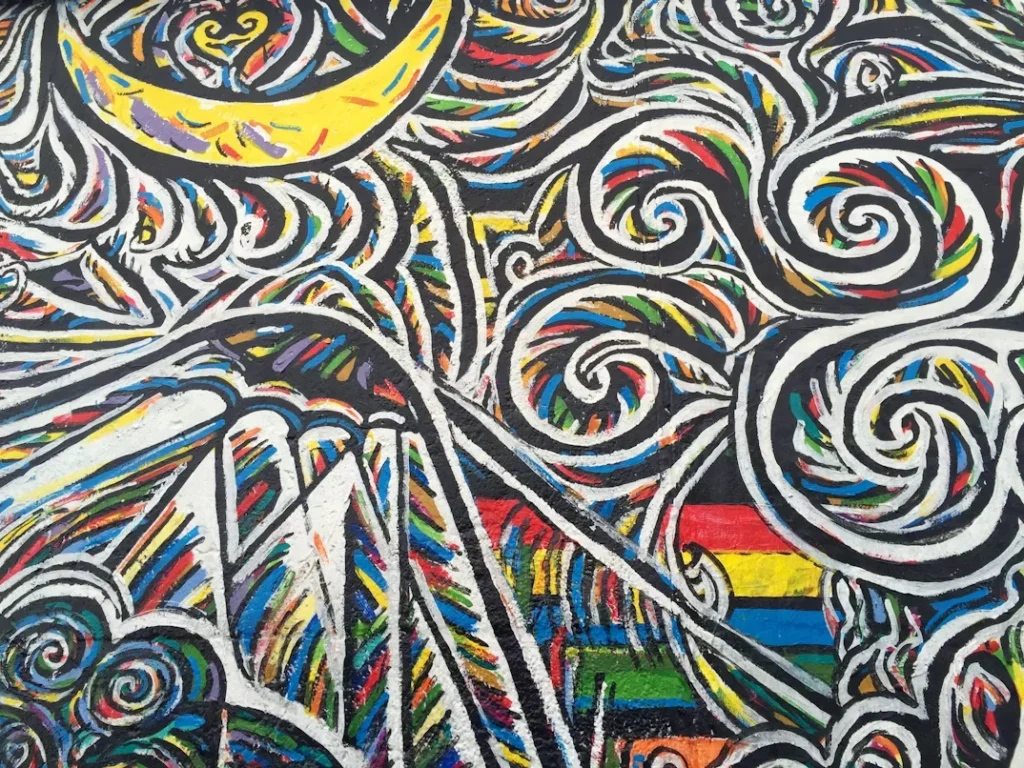
Aboriginal Art refers to the artistic practices of the First Nations peoples of Australia, stretching back at least 60,000 years. It takes many forms, including painting, carving, weaving, sculpture, and body decoration. Unlike Western art, which is often individual expression, it is deeply tied to community, spirituality, and storytelling.
Each piece of art is not simply a decoration; it represents a story, a Dreaming (or Dreamtime) narrative, or a map of the country. Symbols and patterns carry meaning, often only fully understood by those within the community.
The Role of Dreamtime Stories
At the heart of this are the Dreamtime stories, ancient narratives that explain the creation of the land, animals, plants, and people. These stories are passed down through generations, and art is one of the primary ways they are preserved.
For example, a series of dots and lines may represent a river, a journey, or a sacred site. To outsiders, it may look abstract, but to Aboriginal people, it is a living history encoded in symbols.
Common Styles of Indigenous visual culture
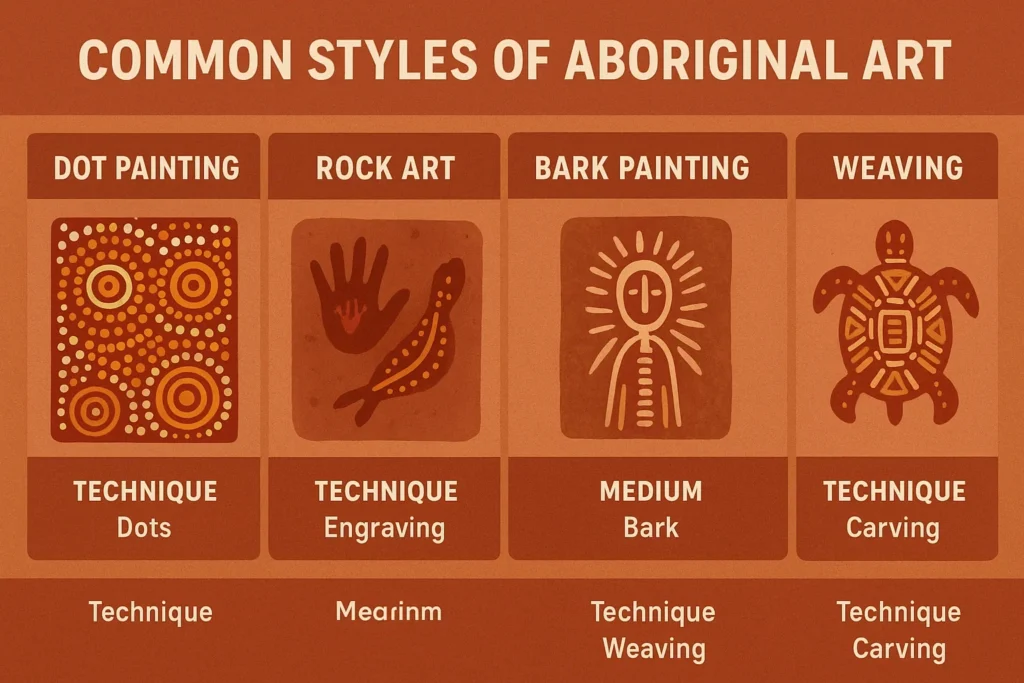
It is incredibly diverse, with styles varying between regions and language groups. Some of the most well-known forms include:
● Dot Painting: Originating from the Central and Western Desert regions, dot paintings use thousands of tiny dots to create symbolic patterns.
● Rock Art: Found in caves and cliffs across Australia, rock paintings and engravings are among the oldest surviving artworks on Earth.
● Bark Painting: In Northern Australia, artists paint sacred stories onto bark using natural pigments.
● Weaving & Sculpture: Baskets, mats, and contemporary sculptures carry both practical and spiritual meaning.
Each style reflects the environment and traditions of the community that created it.
Symbolism in Aboriginal Art
One of the fascinating aspects of it is its symbolic language. Circles might represent waterholes or campsites, wavy lines may show rivers, and footprints could indicate travel paths. These symbols form a visual storytelling system that has been refined for millennia.
It’s important to remember that not all meanings are meant for outsiders; some knowledge is sacred and only shared within certain groups.
Materials and Techniques
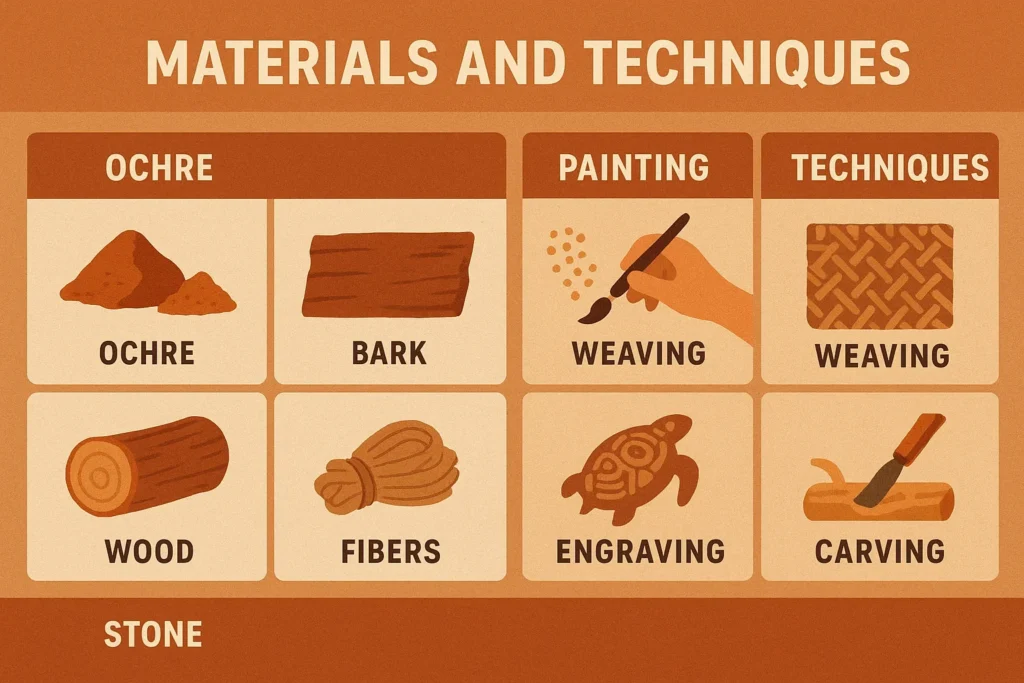
Traditionally, artists used natural materials from their environment: ochre pigments, charcoal, plant dyes, wood, and stone. Today, many artists also use acrylic paints and modern canvases, but the spiritual significance of the art remains the same.
The shift to contemporary materials has allowed it to enter the global art market, while still preserving its ancient roots.
Why Aboriginal Art Matters
It is not just important to Indigenous communities; it is a vital part of Australia’s cultural identity and heritage, recognized globally for its significance and preserved as part of the UNESCO World Heritage listings. It provides profound insight into the world’s oldest continuous culture, reminding us of the spiritual, historical, and emotional connection between humans, stories, and the land.
Supporting artists also helps safeguard ancient traditions, empower Indigenous communities, sustain livelihoods, and protect invaluable cultural knowledge for future generations, ensuring these stories and practices continue to thrive.
Tips for Beginners: Exploring Indigenous visual culture
● Learn the Context: Try to understand the story or dream behind the artwork.
● Respect Cultural Protocols: Some stories and symbols are sacred; approach with respect.
● Buy Ethically: If purchasing Indigenous visual culture, buy from reputable galleries or directly from communities to ensure artists are paid fairly.
● Visit Exhibitions: Museums and cultural centers across Australia showcase authentic Indigenous visual culture and provide interpretation guides.
Final Thoughts
It is much more than paint on canvas; it is a living cultural practice that reflects connection to the land and ancestors while preserving history, spirituality, and identity. For beginners, exploring offers a chance to engage with one of the world’s richest storytelling traditions. Whether through dot paintings, ancient rock art, or contemporary works, each piece carries deep symbolic meaning and serves as a bridge between the past and present, land and people, tradition and the future.






